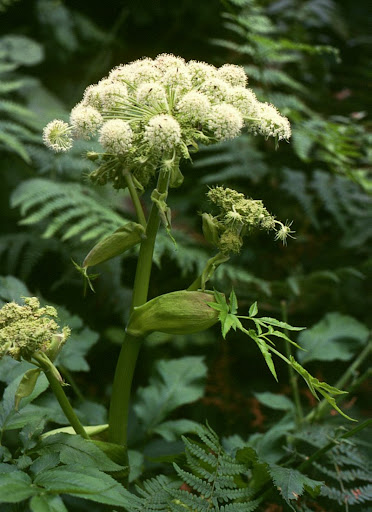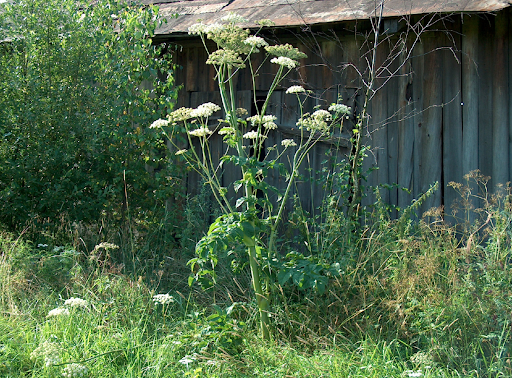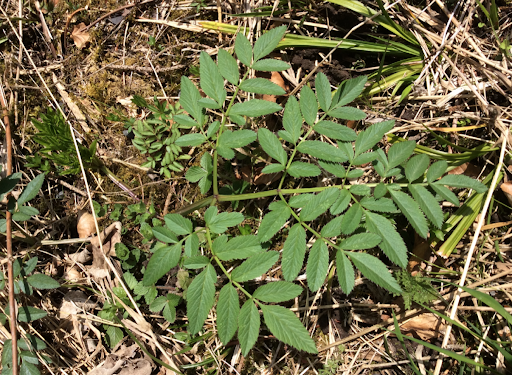Large biennial member of the carrot family commonly 1-2 m tall when flowering from July to September. Small, fragrant white to pale-lilac flowers born on thick bamboo-like stalks with purplish joints in an umbel (umbrella) formation. Leaves are pinnately compound and leaf-sheaths are enlarged. Leaflets are ovate, often lobed, and with toothed margins. Known to be a prolific seed producer.
Usually in open areas with damp soil including ditches, hedgerows, marshes, fields, and woodlands. Tolerant of full shade, full sunlight, and drought, not usually acid-tolerant. Can dominate disturbed habitats due to its prolific seed production and ability to shade out competitors. Strongly attractive to pollinators, leaving native species unattended. Otherwise not seen as food by local insects. The sap contains chemicals which can cause rashes and burns when in contact with human skin.
Was first introduced by French settlers in 1600’s or 1700’s.

Aenean malesuada neque sapien, id auctor leo vestibulum sit amet. Nullam dignissim luctus justo vitae pulvinar. Ut egestas porta mauris vulputate tempus. Aenean mattis urna in arcu viverra sollicitudin. Duis risus mi, mattis eget placerat vel, finibus ut sapien. Maecenas scelerisque lacus eget neque laoreet, in semper dolor rutrum.
Umbrella-like flower heads and leaf sheaths, can grow more than 2 m tall.




Cape Breton and Fredericton are the ground zero of Woodland angelica invasion in North America.
Promote the use of attractive native and non-invasive plants. If you identify woodland angelica on your property physically remove first year plants and cut the seed heads of second year plants to stop the spread. It is recommended to wear gloves, work on cloudy days, and wash thoroughly after handling to avoid burns and rashes. Do not compost or burn plant or plant parts, instead double bag them and let them rot in the sun before discarding. If you spot this invasive species, report the location to iNaturalist, or directly to the NSISC.
Join our mailing list.